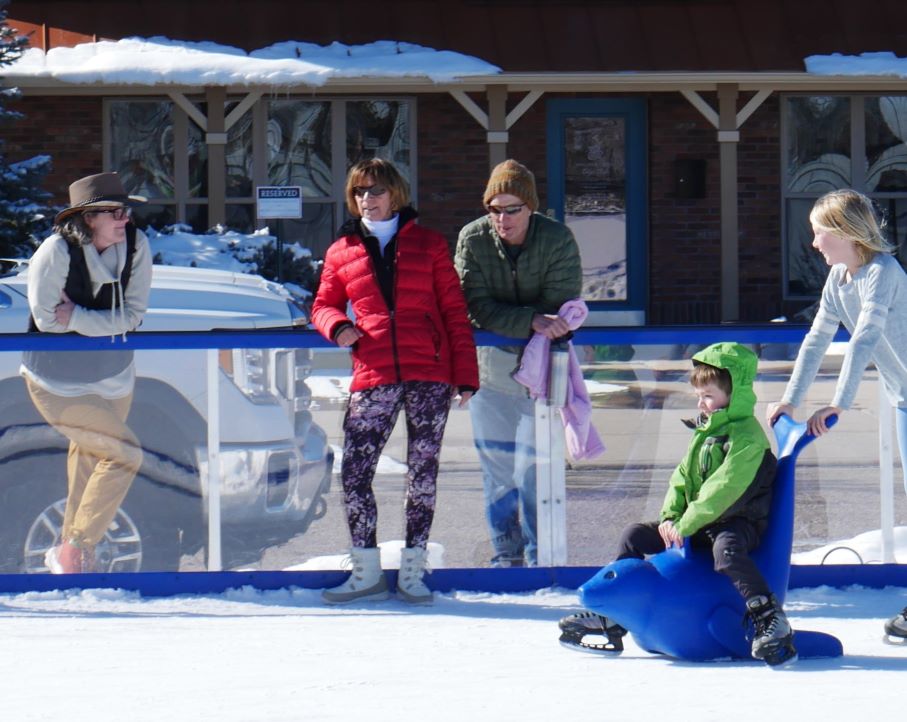One of the most critical elements of a hockey rink is the choice of enclosure. Whether you’re rocking 2-by lumber, plywood, or an arena-style dasher board system, you need a way to keep pucks in play.
It’s Not a Rink Without Boards
One of the most critical elements of a hockey rink is the choice of enclosure. Whether you’re rocking 2-by lumber, plywood, or an arena-style dasher board system, you need a way to keep pucks in play.
For professional sports and community rinks, you’ll want a sturdy dasher board system that can cater to high intensity sports and keep casual and beginner skaters safe. For residential projects with a permanent concrete refrigeration system, or those who know there will be a lot of slapshots or 3v3 action, you’ll likely want to include hockey boards in your build. For a basic home rink, lumber or plywood may be a viable option.
Ice rink boards can be installed over dirt, grass, concrete, asphalt, pavers, sand, or gravel. With the right set of equipment, you can build a rink just about anywhere. Whichever design you choose for your rink, you need to make sure the rink is properly secured with a proven anchoring system.
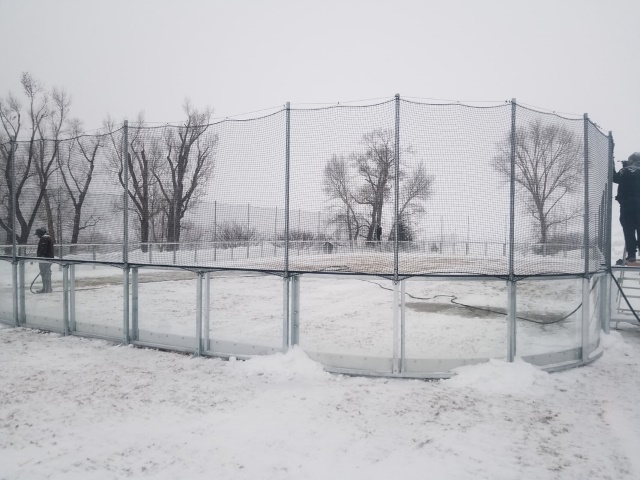
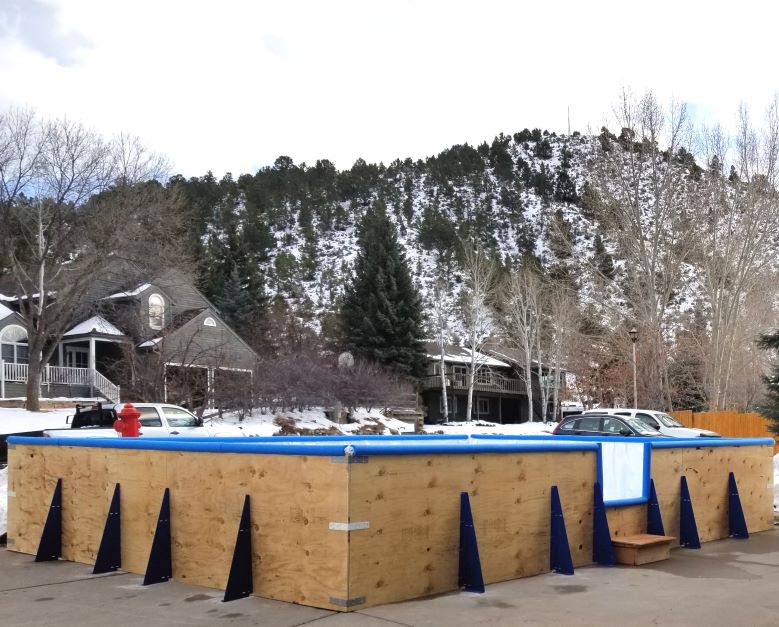
Types of Hockey Boards
Although there are various of types of rink board options from DIY to professional enclosures, there are a few best practices that will apply to any rink. Most importantly, make sure your rink site is as level as possible. Leveling out the space will make installing your boards much easier and safer and will have a superior look compared to a lopsided fill. For naturally freezing rinks, you can get away with some slope, just make sure to follow manufacturer guidelines on the max fill height for your boards and brackets or supports. For refrigerated ice rinks, you’ll need to be level within 2″ for proper system operation regardless.
You also want to make sure you’re using an engineered system to keep your rink boards anchored to the ground and braced together. For public rinks and rowdy families, you’ll want a fully welded dasher board system to protect against skaters leaning and hanging on boards and the occasional body slam or wipeout.
All rink kits, brackets, anchors, frames, and supports are not created equal. Rinks boards can be anchored to concrete or asphalt, staked into the ground, or frozen into the rink ice depending on the design. Make certain you do your research and choose an appropriate hockey board system for your needs.
Dimensional Lumber
Often the first stop for those beginning their ice rink adventure, regular 2×8 or 2×12 lumber combined with a solid support system can be a quick way to get your prototype ice rink built. If you want to give a naturally freezing rink a try in your climate, a lumber rink can be a low-cost way to experiment.
Know you need refrigeration? Choosing a basic lumber hockey board can help you break up the cost of a complex rink project into manageable phases. By starting with lumber, you can spend the majority of your budget on the chiller and ice rink refrigeration system the first year and upgrade to dasher boards in the future.
Make sure you’re using treated lumber that is rated for “ground contact.”
Plywood
If you need taller boards but aren’t ready for a dasher board system, plywood rinks can be a good option. You’ll want to go with a thicker treated plywood with a nominal thickness of 3/4″. You’ll also need a support system designed for tall boards. As with dimensional lumber, make sure to use pressure treated plywood.
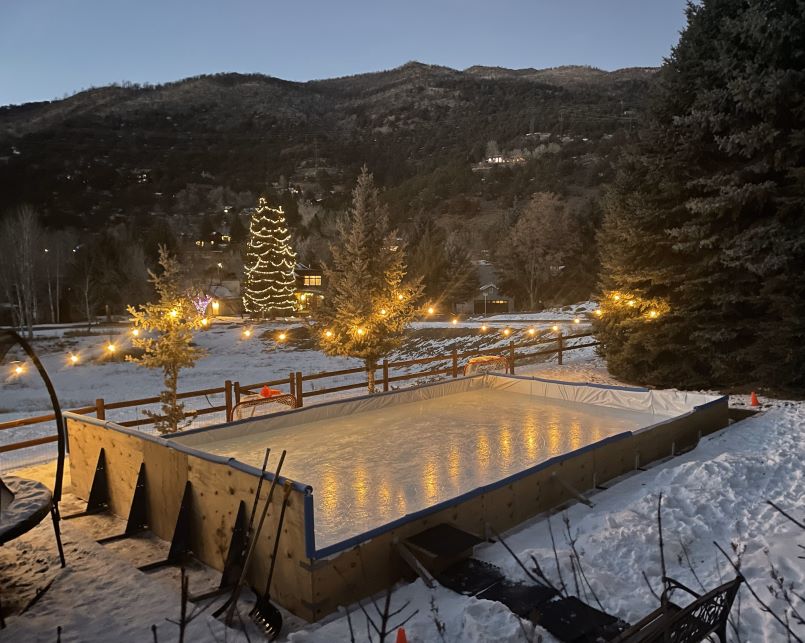
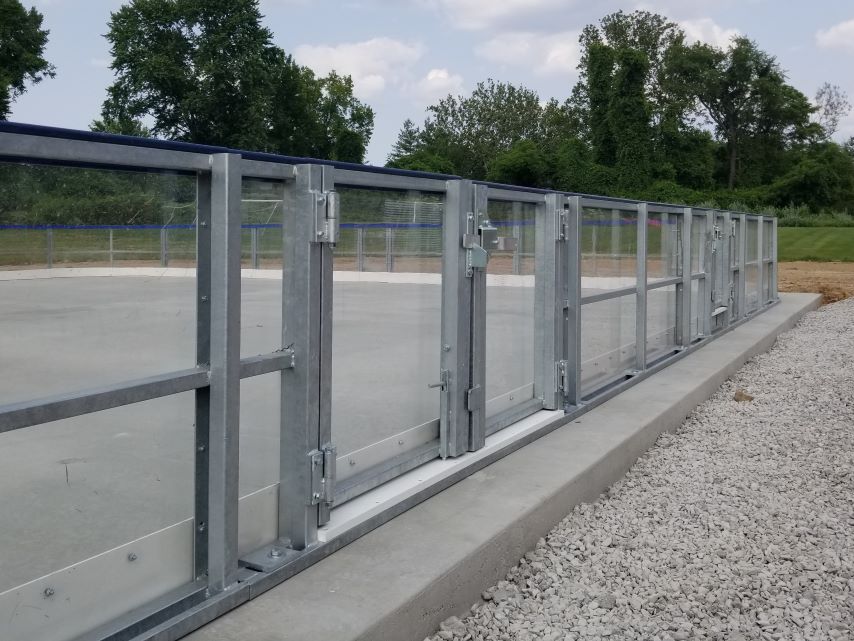
Dasher Boards
Dasher boards provide you with a full-sized enclosure that stands up to decades of harsh conditions and abuse. A dasher board system delivers uninterrupted play with true radial corners and a 42″ board height. Dasher boards can be anchored directly into the rink subfloor, raised on pedestals to accommodate sand-floor rinks, or free-standing with a freeze-in post design for a professional portable system. Fully-welded aluminum or steel framed rinks can be fitted with heavy duty hinged player and equipment gates, support poles for netting or shielding, and a variety of facing materials for indoor and outdoor use.
Add flare and customization with your choice of color for cap rail and kickboard. Go with a traditional white facing, yellow kickboard, and red cap rail for a traditional hockey aesthetic, or leave boards up year-round with a transparent facing, white kick board, and navy blue cap rail for a flexible enclosure that still looks great when converting to summer sports like soccer, tennis, or basketball.
As with any rink component, all dasher board systems are not created equal. Some hockey boards are designed to look the part but may not provide the durability or support of a heavy gauge welded frame. Look out for flimsy framing, thin or hollow board material, and janky gates.
Community Rinks, Arenas, & Training Facilities: When dealing with athletes, open skate, and community events, a dasher board system is absolutely critical to a safe and successful ice rink operation. The enclosure will serve to control rink access, provide a support for beginner and resting skaters, protect against ejections from the rink, and contain dangerous pucks in a fully integrated board and shielding system. Dasher boards can sometimes support additional features like decorative lighting and speakers that may be an important part of your ice rink event.
Home Ice Rinks: Dasher boards aren’t just for commercial projects. The ultimate home ice rink experience: stepping into your own NHL-worthy private ice arena. Well, even if it isn’t a full 200 feet long, a quality made dasher board will elevate your rink design. Dasher boards not only provide the best look and gameplay. but they are truly durable and will make your rink purchase an investment. Fully welded dashers last for decades and can be expanded, relocated, or resold.
